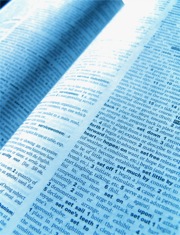 Like all social issues, distracted driving has a unique terminology that’s used by those involved in the conversation — legislators, police, activists, researchers and so on. Here, in context, are some of the key words and phrases used in the national debate over distracted driving:
Like all social issues, distracted driving has a unique terminology that’s used by those involved in the conversation — legislators, police, activists, researchers and so on. Here, in context, are some of the key words and phrases used in the national debate over distracted driving:
Distracted driving: Covers a wide range of activities that draw away a driver’s attention from the road. Bills that seek bans on handheld cell phones and text messaging devices typically are classified as distracted driving legislation. In a broader sense, activities such as putting on makeup, operating a radio, using a GPS system, reading, wrangling kids and animals also classified as distractions to drivers.
Electronic distracted driving: Refers in most cases to distractions caused by use of wireless communications devices such as mobile phones, smartphones, portable computers.
Driving contract/pledge: An agreement between parents and teens outlining acceptable in-car behavior such as: no texting while driving, only emergency phone calls while driving (using hands-free attachment), only one passenger, no driving after 11 p.m.
DWD: Driving while distracted.
DWT: Driving while texting. See “Intexticated.”
GPS: Global positioning system. Use occasionally banned for drivers along with text messaging and chatting on cell phones. More typically, GPS use is allowed under distracted driving laws and legislation.
Handheld: Description of personal electronic devices requiring the use of one of two hands. A person holding a handheld cell phone typically takes one hand off the wheel in order to talk and drive. With text messaging, drivers often use both hands to send messages, using their forearms or knees to steer the vehicle. Laws and legislation typically use the term to differentiate from electronic devices that are built into the vehicle (such as a radio), or portable devices equipped with hands-free attachments such as Bluetooth headsets.
Hands free: Description of personal electronic device that requires no use of the hands. Most often used in connection with mobile phones that have been equipped with hands-free accessories such as a wire headset or Bluetooth headset. Some add-ons to cell phones allow drivers to dial by voice or to write text messages.
Intexticated: Slang for driving and texting behaviors such as weaving that are similar to those exhibited by drunken motorists. Some researchers say drivers perform better while intoxicated than while text messaging.
No Phone Zone: Safety campaign launched by talk show host Oprah Winfrey in January 2010. “The Oprah Winfrey Show” viewers are urged to sign a pledge not to engage in distracted driving behaviors such as texting or using handheld cell phones. In its first four months, the Oprah online sign-up page drew 325,000 pledges. Winfrey has hosted two specials on distracted driving, including one in which a governor signed a texting ban into law.
Primary enforcement: Lawmakers and police use this term to signify traffic offenses for which drivers can be stopped and cited. With “secondary enforcement,” law officers need another reason to pull over the drivers, such as speeding. Primary vs. secondary is a key dynamic in distracted driving legislation. In general, secondary enforcement is seen as a watered down approach to restricting drivers’ use of cell phones and text messaging devices. Some safety-conscious lawmakers have agreed to secondary enforcement in order to get distracted driving legislation on the books. In a few other cases, legislators have upgraded bills from secondary to primary in order to give the legislation teeth. And some states, notably Washington in 2010, have revisited their distracted driving laws in order to move from secondary to primary enforcement.
Secondary enforcement: Means police need another reason to stop and cite motorists who are in violation of a law such as a ban on texting. A ticket then can be issued for the secondary infraction. See “Primary enforcement.”
#X: Used to signal social media contacts that one is driving and unavailable for conversation. Promoted by the It Can Wait campaign in 2014.
Want to add a term? Great! Use the comments feature below.
More resources:


How about adding “The Hands-Free Myth” to the dictionary? Every study ever done proves that there is no difference between “hand-held” and “hands-free” when it comes to distracting drivers. Yet, only the hand-held is banned. So laws that ban only hand-held, in effect, encourage distracted driving.
The only honest paragraph is the second, labeled: Distracted Driving. It lists several distractions that have nothing to do with cell phones. Legislation is dishonest as it is focused on one distraction. Blaming all distracted driving accidents on a single distraction is statistically dishonest. The most dangerous distraction in a teen driven car? Another teen.
… Driving contract/pledge (added to list, thanks Eleanor) …
also:
Cell phone policy – A policy set out by a company or organization, stating what is and isn’t approrpriate use of mobile phone use while driving for its employees. Such policies help protect employees’ safety, reduce crashes, and limit liability.